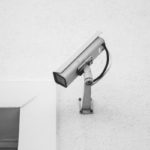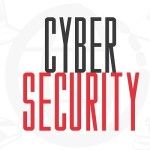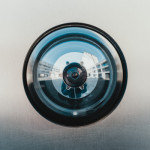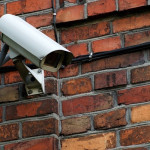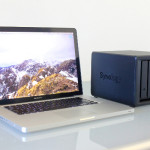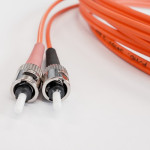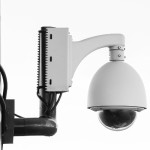What You Need To Know About Wired Security Cameras
So you’ve been debating between wired and wireless security cameras and you’ve finally made a decision to install wired security cameras. Here’s what you can expect:
Additional Equipment
When you purchase a wired security camera system, it will likely come with a DVR box, security cameras, and sometimes the necessary cables. However, the monitor, mouse, and keyboard (all of which are required for a wired security system) will need to be purchased separately.
Unless you have these items sitting around your home, it’s important to factor the cost of these additional items when you are shopping for a system. The only way you may be able to get around this is if you were to connect your cameras to a NAS that is already managed from your computer.
Cable Planning
Your security cameras need to be directly connected to the DVR box, therefore, you will need to be creative with how and where you will run cables across your home. Where you mount your cameras and the location of your DVR box will determine the cable routes. If you are doing this yourself, there are a few things to keep in mind.
Before beginning, make a plan and know the exact layout of your house. Also, find out if anything is in between your walls such as insulation or fire blocks that could potentially hinder cable runs. Map out your cable route before beginning the process, and invest in the proper tools to help you accomplish this task.
The Dirty Work
Again, if you will be installing your wired security camera yourself, be prepared to get your hands dirty. If you’re lucky, you may be able to simply run cables down through the floor, across the basement, and up through the floor on the other side of the house. However, you may be required to crawl through attics and crawlspaces. With that said, wear the appropriate attire and invest in good knee pads to protect yourself.
Network Connection
The benefit of having a wired security camera system is that you don’t need to connect it to the internet for it to work. The downside is that you cannot access it remotely when you’re away from home. While keeping your cameras off of the internet can be a safer bet, if you want to view your feeds remotely, you may want to consider connecting your cameras to your network.
If you need help choosing a wired security camera system and installing it, feel free to call 888-203-6294 or visit SecurityCamExpert.com. You can also connect with us on Facebook, Google+, Twitter, LinkedIn, and Pinterest.
Cloud Video Storage
It’s likely that you have heard about the cloud and may already use its services in various aspects of your life. But did you know it can improve your surveillance system and storage?
Cloud storage allows you to save your video footage remotely and access it online. You may use cloud storage in lieu of, or in addition to, saving your files locally, whether on an NVR or computer hard drive.
By utilizing cloud storage, you gain access to numerous benefits. Here are some of the biggest and best benefits of cloud storage.
Storage Space
You get more storage space by using the cloud. This means prolonged retention of videos which can be helpful for evidence purposes. If you use cloud storage in addition to your NVR or computer hard drive, you allot yourself even more potential storage space.
There are NVRs that are specifically designed to work with cloud storage, which contain a small hard drive that stores videos locally before uploading them to the cloud. Just remember that the uploading process can slow down your network. If possible, NVRs with a cloud service that allows you to upload videos on a schedule is ideal. This will enable you to schedule uploading during off-peak hours, such as nights, early mornings, or weekends, to offset the impact on your network.
Added bonus – since your data files are not stored locally, in the event that your equipment is damaged or stolen, your video footage remains safe.
Remote Maintenance
Because your cloud storage solution is managed offsite, you won’t have to rely on on-site technicians and appointments to resolve issues. Troubleshooting and maintenance may be performed as needed, minimizing any downtime and allowing for better customer service and support overall.
Accessibility
You may check in on your surveillance system from anywhere, anytime. While other systems may allow remote access, you may have to deal with speed and buffering issues. With cloud video surveillance, built-in buffers and systems keep video playback and streaming quick and clear.
Automatic Updates
Cloud solutions allow for regular updates as needed – you don’t have to do a thing! This ensures that your system safe from potential vulnerabilities and operating at its best.
Scalability & Convenience
As your on-premise equipment requirement is greatly diminished, upgrading and scaling your system is made easier. You can forgo the extensive installation process and expand your system as necessary as your business grows. Also, because most of the equipment is off-site, you can save precious office space.
Stability
By now you should know that cloud solutions are great at self-monitoring and resolving issues with minimal user intervention. With that said, these systems are constantly monitored for stability and have redundant systems that ensure security cameras are always active and recording. And in the case of natural disasters, which may destroy your on-site equipment, your data will be fine.
Cost-Effective
Save money by choosing cloud solutions, which usually offer a low monthly fee for their services. In the long run, this is much more cost-effective than purchasing on-premise equipment, which requires installation and routine maintenance at additional costs.
Do you utilize cloud surveillance solutions? Share the ups and downs of your surveillance system with us on Facebook, Google+, Twitter, LinkedIn, and Pinterest.
For a great selection of CCTV security cameras, systems, and surveillance equipment, please visit SecurityCamExpert.com or call 888-203-6294 today!
Halloween Safety & Security Tips
Halloween is almost here, and this year it falls in the middle of the week. That makes your commute home a bit trickier as children may be roaming the streets already. And although it’s always important to watch for pedestrians, it is especially crucial on Halloween.
Aside from being safe on the road, it’s imperative to mind your children and your home. Here are some Halloween security tips to help you enjoy a safe and happy Halloween.
Trick-Or-Treating
Although going door to door collecting candy and treats from strangers is a Halloween tradition, it poses safety risks.
- Check All Treats Before Eating – All treats should be inspected by adults before children eat them. To be safe, toss anything that looks tampered with and anything that doesn’t come in a pre-wrapped package.
- Light Up The Night – Make sure your children are easily visible with flashlights, glow sticks, or even reflective tape. To make it easier, try using transparent bags for your children’s treats and toss a glow stick in there. That way, your kids have one less thing to carry and they are still easily visible.
- Consider An Alternative – If you would rather your children not go trick-or-treating, you may want to consider an alternative such as a haunted house or hayride. Or you can visit friends or family so that you need not worry about what they get in their bag.
- Host your own Halloween – Or you can simply host your own Halloween event at your home. This way, you are in the comfort of your own home and can keep an eye on your children and guests.
A Night On The Town
Leaving a porch light on when you leave for the night may not be the best idea. On Halloween, that is commonly known as a sign to come knocking for treats, and thus, people will soon realize that no one is home. Here are some ways you can protect your home while you are out.
Lights
Be sure to keep your home well lit. This will deter potential intruders or pranksters as it will appear as if someone is home and still awake. Outdoor lighting will eliminate shadows and hiding places.
Security System
Engage your security system if you have one. If you do not, now would be a great time to invest in a solid home security camera system.
- Settings – Review your camera settings and adjust accordingly. Keep your cameras focused on potential entryways (doors, windows), but you may also want a view of the streets and other areas around your home – pranksters may attack from any or all sides.
- Timers – Make use of light timers if you have them. Set timers to have specific rooms light up every now and then. For example, leave the living room light and television on but have the kitchen light turn on and off occasionally so it appears that someone is getting up for a snack.
- Arm Your Security System – Sometimes we may forget so it’s worth the reminder to set the alarm and lock your doors and windows before you leave.
Cell Phones
For most of us, cell phones act as our lifeline and have become essentials alongside our wallets and keys. If your child does not have a cell phone and will not be with you on Halloween, be sure you have the phone number for the supervising adult or someone who will be accompanying your child. You may even let your child borrow your phone for the night so that you have a way of keeping in contact.
- Charge It – Whether it’s your own phone or your child’s or both, be sure that all phones are fully charged before heading out. If your child is going out without you, you may want to check the signal reception where he/she may be.
- Check Your Security System – Your security system most likely enables remote viewing via an app or device, and should alert you of any suspicious activity. If alerts are not enabled, be sure to check in periodically.
Staying In
Although we may hate to imagine that persons with bad intentions may target us on Halloween, it is always a possibility. If you’d like, you can leave a bowl of candy on the porch with a sign that tells children how many they can take and that they are under surveillance. If you sit on the porch and hand out candy, keep your cell phone close and sit with a friend or family member (safety in numbers).
In addition to the aforementioned security tips, it is always in your best interest to use common sense on Halloween and every day. Make sure children stay away from strange neighborhoods and that they know they should not go inside someone’s home. If possible, travel with a group for maximum safety.
Do you have any other Halloween safety tips to share? Connect with us on Facebook, Google+, Twitter, LinkedIn, and Pinterest.
Invest in an affordable security camera system to protect your home. Visit SecurityCamExpert.com to browse our selection or call 888-203-6294 to discuss your options.
Cyber Security Awareness For Consumers
Cyber security is extremely important, especially in this day and age, which is why October is recognized as National Cyber Security Awareness Month. Without the proper safeguards in place, your identity and personal data are at risk. Here are some cyber security tips to help raise awareness and protect you from cybercriminals.
Watch What You Share
Cybercriminals are using more advanced tactics to gain information. Attacks are designed based on extensive research of the information you share online. Cybercriminals scour social media for various personal details, from workplace and job titles to friends and activities. They use this information to manipulate unsuspecting victims, a tactic known as social engineering.
Examine Your URLs
Pay close attention to URLs. As mentioned, criminals are using smarter approaches. They use branded emails with logos and fonts that look like legitimate retailers to get you to click on malicious links.
To safeguard against these scams and avoid being redirected to a fake site, always type the retailer’s address into your browser. And always make sure the site begins with https:// (as opposed to http://). The “s” stands for secure and makes a big difference in your online safety.
Secure Payment Methods
Whenever you enter your credit or debit card details into an online form, you are susceptible to interception from cyber criminals. Dodge these risks by setting up a dedicated online shopping account with strict credit and overdraft limits, and with only enough money to buy what you need.
Listen To Your Suspicions
Trust your instinct. If it seems suspicious, don’t use it. Make sure you are keeping track of the retailers you are expecting shipments from. If you receive an email that contains tracking information from a courier service or retailer you have not used, do not open it. It will likely contain a tracking URL which is a malicious link in disguise. And the same goes for attachments as these could contain malicious code. To err on the safe side, manually type the courier service website into your browser.
Fallen Victim? Take Immediate Action
If you think you may have fallen victim to cyber crime, act fast!
- Report It To The Police
Many cases go unreported every year, lending to the success rate of these cyber crimes. By reporting it to police, you can aid cyber criminal investigations help to shut down these operations for good.
- Report It To Your Bank
As soon as you notice unusual account behavior or suspect something may be wrong, contact your bank and have your card cancelled immediately. In some cases, depending on the circumstance, you may be able to reverse the fraudulent charges and recover your money.
- Report It To The Business
The business you thought you were buying from would benefit from knowing they are being impersonated online as you may not be the only victim. The business has the resources to track down the perpetrators and is likely familiar with the processes of getting suspicious websites blacklisted or shut down.
- Do Not Negotiate
Ransomware attacks usually involve locking you out of your PC and asking for a ransom (in untraceable currencies like Bitcoin) to regain control. If you give in and pay the ransom, you will be identified as a soft target and they will be back.
Do you have any cyber security tips to share? Connect with us on Facebook, Google+, Twitter, LinkedIn, and Pinterest.
For your security cameras and CCTV video surveillance needs, please visit SecurityCamExpert.com today! Call 888-203-6294 to request a free quote or schedule a site survey.
Dahua & Hikvision Ban
In case you hadn’t heard, the 2019 National Defense Authorization Act was recently signed into law. The whole process began in May of this year, when the US house passed the bill, and then on August 1st the Senate passed the bill. Several days later, the President made it official by signing it into law on August 13, 2018. The 2019 NDAA has a particular impact on the security industry as it bans both the purchase and use of Dahua and Hikvision and their OEMs in the US government and US government-funded contracts.
Although the Dahua and Hikvision ban will begin on August 13, 2019, the effects of this act are already being felt by Dahua and Hikvision. Stocks for both companies have dropped noticeably since the passing of the NDAA and we can expect further decline. Despite the delayed enforcement, there is no sense in purchasing and using equipment now that will soon be phased out.
Extending the ban to OEMs will eventually trickle down and impact wholesale distributors. Buyers will be concerned with potential security risks, possible issues with prospective integration with public or government systems, and future legislation at the state or local level. In addition, this will impact consumers outside of the US, as negative media coverage may make them feel wary of the security and dependability of Dahua and Hikvision products.
Only time will tell what the true implications of the 2019 NDAA will be. Share your thoughts on the ban with us on Facebook, Google+, Twitter, LinkedIn, and Pinterest.
Visit SecurityCamExpert.com to browse our extensive selection of quality security cameras, CCTV surveillance packages and security equipment for your home or business. If you have any questions or would like a free quote, please feel free to contact us 888-203-6294.
Protect Your IP Surveillance System
These days, IP security cameras are much easier to use and are more commonly utilized for home security. Whether home owners want to watch their property or their pets, IP security cameras seem to be the surveillance solution of choice.
Unfortunately, these home security systems are often targeted by hackers and bots. To better safeguard your IP cameras and privacy, check out these helpful IP security camera tips.
Update Firmware
Modern IP security cameras provide user-upgradeable firmware. When a security vulnerability is found, the manufacturer will fix it by issuing a firmware update. If your cameras are operating with an older version, they may be vulnerable to exploitation from hackers or online voyeurs. Always be sure that your firmware is up to date and routinely check for updates to protect your system.
Keep Cameras Local
The concept is simple – If you are worried about your live feed ending up on the internet, do not connect your cameras to the internet.
To protect your privacy, keep your security cameras on a local network and assign them non-routable internal IP addresses (ex. 192.168.0.5 or the like). But even then, your cameras may still be exposed by camera software that sets up port forwarding or uses UPNP to expose your cameras to the internet. Make sure your cameras are set up on local-only mode – consult your installer or check the manufacturer’s website to learn how.
Assign Passwords To Cameras
All too often, users forget to add password protection on their IP cameras, and sadly, this is not usually turned on by default. Without this, IP cameras are left wide open and vulnerable.
Luckily, most cameras offer at least some form of basic authentication, and although it may not be much, it is better than nothing. Remember to protect your cameras by assigning a username and strong password and changing it periodically.
Change Defaults
We cannot stress this enough – Always, always, ALWAYS change the default usernames and password for your devices. In case you didn’t know, the default admin name and password for your IP camera is usually available on the manufacturer’s website in the support section. That said, if you don’t change these defaults, anyone could potentially access your security system, view your feeds, and control your cameras.
WPA2 Encryption
If you’re using a wireless camera, you should only connect it to a WPA2-encrypted wireless network. This will minimize the risk of wireless eavesdroppers connecting to your network and accessing your video feeds.
Be Mindful Of Locations
Don’t place IP security cameras in areas of your home that you wouldn’t feel comfortable with strangers seeing. Regardless of the security measures to protect your camera feeds, there is always a possibility of getting blind-sided by a Zero-Day vulnerability that hasn’t been found by the manufacturer yet.
Share your own tips and experiences with us on Facebook, Google+, Twitter, LinkedIn, and Pinterest. For a wide selection of IP security cameras and more, visit SecurityCamExpert.com or call 888-203-6294 today!
CCTV Surveillance Cameras: Maintenance & Troubleshooting Tips
After you purchase and install a home security camera system, it is important to maintain it in order to preserve its quality and performance. From the surveillance cameras to the cables to video storage, all parts must be working properly to ensure optimal surveillance and security. Here are some helpful maintenance and troubleshooting tips for your surveillance system.
Maintenance
- Hard Drives
Check your hard drive regularly by simply playing back recent video. To make sure your cameras are properly recording, check the field of view and filter through different dates and times. Make sure you are getting the proper recording duration. A surefire sign that something is wrong is if the duration of footage stored has significantly decreased. For example, you used to get weeks or months of footage, but now it seems you are only getting a few days worth.
- DVR & Security Cameras
Cooling fans assist in preventing your DVR from overheating. Unfortunately, when they suck in the cool air, dust begins to build up as well. The accumulation of dust can damage the fan, resulting in overheating. Cleaning your cooling fan regularly can prevent this and is relatively easy. Computer dust sprays are available at many computer stores and you simply aim at the vent areas and spray.
The IR (Infrared) lights on your security cameras tend to attract spiders and bugs. Because of this, spiders tend to build their webs around the cameras in order to catch the bugs attracted to the light. Consequently, these spider webs interfere with your videos. Check your playback or live feed to see which cameras are affected. If you cannot kick the problem, it may be better to use cameras without IR and install a separate light source to illuminate the area.
Every so often, you should use a soft cloth or wipe to remove any dust or debris and clean the camera lens. A dust mop with a long handle can help you reach higher mounted cameras that are typically out of reach.
- Day/Night Recording
Camera sensors and other parts can wear out over time and will eventually need to be replaced. In addition, camera connections may need maintenance as environmental factors such as heat, cold, and moisture can affect them. If you see any signs of connections issues, such as lines in the image, flickering or other image issues, you should address these immediately to prevent further damage or total image loss.
Troubleshooting
Issue: Security cameras are out but the DVR is working.
- Restart the camera power box.
- Make sure the power box has power.
- Look for lights on it (sometimes these are inside the box and may be difficult to see).
- Many larger boxes have fans so look for signs of life.
- If these don’t work, schedule a service call as it may be a power box issue (although rare, power boxes sometimes go out).
Issue: DVR or NVR is not reachable by Internet (no phone or computer access).
- Did you reset your router to default or get a new router? If yes, then this needs to be repaired professionally.
- Try restarting your DVR and router as well as any other network devices (ex. network repeaters, adapters). If this does not resolve the issue, you may need professional assistance.
- Check all connections – make sure that the internet connection is firmly in place behind the DVR as well as in the router. These can come loose, especially when cleaning around the DVR or relocating something nearby that may have pulled the cord out.
Issue: DVR is not playing back video.
- Try rebooting the DVR (the rule of thumb for any issue with electronics).
- If that does not work, it may be a bad hard drive. Check the DVR and see if the hard drive is showing up in the settings. If not, this is a definite issue and you will need to replace your hard drive.
If you need help choosing the right security cameras for your property as well as installation services, feel free to contact us! You may browse our selection online at SecurityCamExpert.com or call 888-203-6294 to schedule a site survey or get a free quote. You can also find us on Facebook, Google+, Twitter, LinkedIn, and Pinterest.
Local Storage Options For Your Security System
There are plenty of aspects to consider when it comes to investing and installing a new security camera system. The goal is to deter any theft or crimes while capturing the necessary footage should an incident occur. With that said, aside from the security cameras you choose, your surveillance storage solution should be of high quality and capacity and tailored to your storage needs.
Storing your video footage locally makes it easier to access, and is usually easier to use. In addition, local storage options are much more cost-effective than other storage solutions. In terms of local storage, there are two main options: internal or external. Internal storage is saved within the camera whereas external storage is saved to a hard drive, usually located within a computer or CCTV DVR/NVR. Each option poses their respective advantages and disadvantages.
Internal Camera Storage
When you store your video footage internally, it is usually via a microSD chip within the camera. This option is ideal for those who don’t want to rely on internet access or wiring, as this can slow down your internet. In addition, since internal storage bypasses any transferring to external storage, video footage is nearly immediately available.
The biggest downside of internal storage is its limited storage capacity. In an effort to combat this, most security cameras using local storage only record when motion is detected. And these cameras are more vulnerable because the footage is stored internally, thus, if the camera is stolen, so is any video evidence that could be used to prosecute the thieves.
External Camera Storage
If you need to record footage throughout the day, external storage is a great option as you can store large amounts of video at a relatively low cost (especially compared to online storage.
Wired Camera Storage
Wired solutions will save your network a load of work and will be faster when watching live feed (minimal lag time). Typically, you will have some type of hub that encodes the recording, and then the wire will route to either a DVR (digital video recorder) or a personal computer with lots of storage space. If you plan on editing the video, personal computers are more convenient.
Unfortunately, wired security cameras are susceptible to severed wires. If you opt for a wired camera, you will want to embed the wire through the wall and make sure that your camera is securely mounted.
Wireless Camera Storage
If you opt for wireless cameras, you are choosing a very secure solution. These are also the easiest to install as you usually just plug it in, connect to a network and install software. Your video would be routed to either a personal computer or an NVR (network video recorder).
Unfortunately, wireless cameras are not ideal for smaller home wireless networks. They can slow down the internet and may be susceptible to delays in your video feed. Should you choose wireless solutions, just be sure that your network can handle the load.
While there is not a universal best storage solution, there are solutions that are better suited for you than others. Take the time to evaluate your needs to determine which storage solution would work best for you.
If you need help determining which video surveillance solution to choose, contact us at 888-203-6294 or browse our inventory online at SecurityCamExpert.com. You can also connect with us on Facebook, Google+, Twitter, LinkedIn, and Pinterest.
Security Camera Cables: Ethernet Vs. Fiber Optic
When installing a new surveillance system, whether at home or for your business, there are many factors that need to be considered. Aside from choosing the proper security cameras, devices, and management software, security camera cables are important and often overlooked.
Security camera cables are crucial to your surveillance system as they are responsible for power and data transmission within your system. You will likely be upgrading your system from analog closed-circuit television (CCTV) to an Internet protocol (IP)-based system. Thanks to special parts called encoders, if you are only upgrading your legacy system, you can keep your analog cameras and coaxial cabling in place. The encoders convert the analog output of the camera for use by an IP-based security system.
Alternately, if you are upgrading to IP cameras and want to keep coaxial cable in place, you would need to install adapters at both the device and the switch (coaxial cable cannot handle the digital output of the cameras).
Encoders and adapters are merely affordable, short-term solutions. And because they introduce new points of failure, they can become costlier in the long run.
IP Camera Systems Cables
Upgrading your system includes your security camera cables as well. For IP-based systems, there are two choices: Ethernet (copper) cable or fiber optic (glass) cable.
Ethernet Cable
Made from twisted copper wires, Ethernet cables carry data using an electrical current. Cat 5e is currently the most commonly used in home applications and can support speeds of up to 1,000 Megabits per second (Mbps) over 100 meters (m). Cat 6, 6a, 7, and 8 cables are more commonly used in business and data centers as they can handle larger data transfers, ranging from 10-40 Gigabits per second (Gbps).
Fiber Optic Cable
Fiber optic cables use light to send digital data along flexible, optically pure glass or plastic fibers that are about the width of a human hair and enable rapid movement of data. There are two types (single or multimode) which determine the speed and length of data transmission. The differences between the two types are significant and dictate how each is used.
- Single-Mode Fiber
Because it has a narrow core of optical glass surrounded by highly reflective cladding, single-mode fiber only carries data via a single mode of light (typically transmitted by laser). This allows for lower attenuation (data loss) over longer distances and, thus, is ideal for use in high bandwidth runs (ex. telecom and communications companies, college/university campuses).
- Multimode Fiber
Multimode fiber has a larger core, allowing several different light signals (more data) to pass through simultaneously. With a larger core comes narrower cladding, which results in more data attenuation. With that said, multimode fiber is better suited for shorter distances (ex. transmitting data and signals across a local area network).
Ethernet Vs. Fiber Optic Cables
Choosing between the two options will depend on your individual needs. Here’s a look at the strengths and weaknesses of each.
Data Handling, Speed & Distance
- Ethernet cable has improved over time, with the Cat 7 and Cat 8 able to support up to 25 Gpbs to 40 Gbps over 30 m runs. Unfortunately, regardless of category, copper has a much higher attenuation rate, which only increases with the distance of the run. Thus, you would need to install an amplifier or repeater for every 100 m (328ft) of cable.
- Fiber optic cables are the better choice, as multimode cables can reliably handle 40 Gbps and up to 100 Gbps depending on the quality of the cable. Speed and distance depends on the light mode, but fiber can reliably transmit data between 610-2,000 m (2,000-6,562 ft) before the signal requires amplification.
Usability, Safety & Security
- Ethernet cabling is straightforward and ideal to use in tight spaces since copper is a flexible metal and can bend a great deal before it succumbs to the stress. However, these cables pose very minimal fire hazard risk, particularly if they are used to carry power to a device (such as an outdoor security camera). And if you are running Ethernet cables to outside cameras (ex. on light poles in parking lots, at the edge of a property), there is also a risk of attracting a lightning strike. In addition, they also post a security risk since they tend to leak data, and are also susceptible to outside interference (ex. electrical sources, other data cables).
- Fiber optic doesn’t radiate data signals at all and provides good security, but it’s not without its faults. Because it is made of glass, despite its flexibility, there is a chance for breakage if bent too far. There is also a greater chance of damaging the cable during installation or during some later construction, and it is difficult to properly splice it. These concerns should be raised with vendors you speak to before purchasing.
Cost
- Ethernet is more affordable in the short term. The cable, its components, and installation tend to be cheaper thanks to its ease of use. However, these tend to require more regular maintenance, thus increasing ownership costs over time.
- Fiber optic is definitely more expensive up front, as cost of cables (especially single mode) and installation are much higher. Despite this, it has a lower ownership cost over time thanks to less maintenance (compared to copper). Also, the cables can more easily handle expanded bandwidth without having to run new cable.
While both Ethernet and fiber optic cables have their advantages and disadvantages, it really depends on your security needs. Have you chosen between the two? Share your experience with us on Facebook, Google+, Twitter, LinkedIn, and Pinterest.
For a great selection of CCTV security cameras, systems, and surveillance equipment, please visit SecurityCamExpert.com or call 888-203-6294 today!
PTZ Cameras: What To Look For
PTZ security cameras offer Pan, Tilt, and Zoom capabilities for more advanced and comprehensive surveillance. Because of their unique flexibility and broad coverage, PTZ cameras are often chosen to remotely monitor large areas such as parking lots or stadiums. If you are considering installing PTZ surveillance cameras for your property, here are some of the best PTZ camera features and benefits.
Large Field Of View
Depending on where you install your PTZ camera, it could have a 360 degree field of view. In addition, most cameras can be pre-programmed to provide specific viewing angles at pre-determined times. Pan and Tilt can also be pre-programmed. Thanks to this, PTZ cameras can do the job of a multi-camera installation, making them a cost-effective and smart alternative for large area surveillance and protection.
Motion Tracking
Most PTZ cameras come with built-in tracking which can be set to detect motion and track a person or object, automatically panning, tilting or zooming to follow the person or object as it moves. This feature can prove invaluable should a theft or vandalism occur on your property. When choosing a PTZ camera, full motion tracking capabilities is a must.
Night Vision
This is an important feature in nearly all security cameras, but especially in areas with poor lighting conditions. The modern, more advanced PTZ cameras can capture images in total darkness thanks to LEDs and special IR filters. The small LEDs emit infrared light, which is not visible to the human eye, but with the special IR filter, the camera sees a well lit area.
Remember that a PTZ camera that is rated for a detection range of 600 feet or more will usually be rated for a max range of 400 feet for night vision. Also, it is recommended that you set up your PTZ cameras in the same lighting conditions they will be recording in, whether dark or light.
Weatherproof
If you will be installing PTZ cameras outdoors, they must be weatherproof. Most PTZ cameras are designed to withstand harsh elements, but it is wise to double check the specifications to ensure their durability. Weatherproof PTZ cameras can be installed in very remote locations such as rooftops or the sides of tall buildings.
Powerful Zoom
PTZ security cameras have a detection ability that ranges from 150 feet (on the low end) up to 1,000 feet (on the higher end). The ability to zoom in on a person or object ranges from 12X to 36X for higher level PTZ Speed Domes. This makes them ideal for large parking lots or building tops as it allows the camera to be discreetly out of sight while still providing the option to zoom in for a better picture of what is happening.
Tamper Resistant
The best place for a PTZ camera is mounted high above the ground, which enables the best view possible, a wide 360 degree range, and added protection. As mentioned, most PTZ cameras are built tough, with rigid metal housings and high-strength polycarbonate domes that are virtually shatterproof to vandals.
Alarm Inputs
Most PTZ cameras have four alarm inputs, which connect to other important devices (ex. motion detectors, door contacts, glass break sensors). The camera can be programmed so that when activity occurs in a given area, other programmed activity is halted in order to zero in and record what is going on.
Auto Focus
The good PTZ cameras will have full range auto focus built in. This ensures clarity no matter where you pan, tilt or zoom. In addition, most have an auto adjust IR LED that quickly focuses the picture when moving the camera in areas of complete darkness. This feature is almost always missing from cheaper cameras.
Simplified Installation
Because they can cover a wider area, it may be more cost-effective to install a couple PTZ cameras to monitor your property (ex. parking lots, garages) rather than implementing several fixed security cameras. You can save on both the initial cost and installation of your system.
High Definition Options
Higher end PTZ Speed Domes are also available in IP versions, which will deliver resolutions from 720i to 1080P, and with HD-SDI technology, which provides high definition video in full 1080P resolution. The HD-SDI PTZ cameras are easier to install and maintain than IP cameras since they are installed and set up exactly the same way as standard analog cameras.
These types are only recommended when you need the highest resolution images possible. They require 2-4 times as much hard drive space as regular analog security cameras and are rather expensive for large installations.
For a great selection of PTZ security cameras and other surveillance system equipment, please visit SecurityCamExpert.com or call 888-203-6294. You can also connect with us on Facebook, Google+, Twitter, LinkedIn, and Pinterest.
